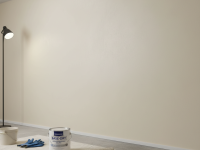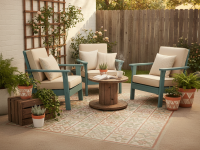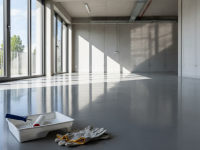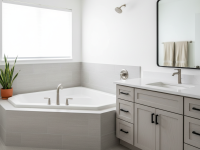<h2>DIY Shower Upgrade: Replace Fixtures Without Damaging Your Tiles (A Pro’s Guide)</h2>
<p>Hey there, fellow home improvement enthusiast! Are you staring at those old, leaky, or just plain ugly shower fixtures and dreaming of a shiny new upgrade? Maybe your showerhead is dribbling more than showering, or that faucet handle feels like it’s from another decade. The thought of a fresh, modern look is exciting, right?</p>
<p>But then the fear creeps in: "What if I damage the tiles?" That’s the big one, isn’t it? The pristine (or not-so-pristine) ceramic, porcelain, or stone surrounding your fixtures can feel like a minefield when you’re armed with a wrench. Believe me, I’ve been there. I’ve tackled more than a few fixture swaps in my time, and I’ve learned a ton about how to get the job done right – and most importantly, how to keep those tiles safe and sound.</p>
<p>Good news! Replacing shower fixtures without harming your tiles is absolutely achievable for most DIYers. With a bit of patience, the right tools, and some insider tips, you can transform your shower space without calling in a pricey plumber or staring at a chipped tile disaster. Ready to dive in? Let’s get your shower looking fantastic without a single scratch!</p>
<h3>Why Even Bother with a DIY Shower Fixture Swap?</h3>
<p>You might be thinking, "Is it really worth the effort?" Absolutely! Here’s why tackling this project yourself is a fantastic idea:</p>
<ul>
<li><strong>Cost Savings:</strong> Plumbers are great, but their service calls add up. Doing it yourself can save you a significant chunk of change that you can then put towards those gorgeous new fixtures.</li>
<li><strong>Personalized Touch:</strong> You get to choose exactly what you want, matching your personal style and bathroom decor perfectly. No compromises!</li>
<li><strong>Improved Functionality:</strong> Say goodbye to low water pressure, leaky drips, or stiff handles. New fixtures often come with improved technology, water efficiency, and a smoother user experience.</li>
<li><strong>Satisfaction:</strong> There’s nothing quite like stepping into a shower and admiring something you’ve upgraded with your own two hands. It’s a real sense of accomplishment!</li>
</ul>
<h3>Gather Your Arsenal: Tools and Materials You’ll Need</h3>
<p>Before you even think about touching those old fixtures, let’s talk tools. Having everything at hand will make the process smoother and reduce the chances of frustration (and tile-damaging mishaps).</p>
<ul>
<li><strong>Adjustable Wrench or Pliers:</strong> Essential for loosening and tightening coections. Look for one with smooth jaws or use non-marring pliers to protect chrome finishes.</li>
<li><strong>Screwdriver Set:</strong> Phillips and flathead, for various screws that hold handles and escutcheon plates.</li>
<li><strong>Utility Knife or Scraper:</P> For removing old caulk or sealant.</li>
<li><strong>Penetrating Oil (like WD-40):</strong> A lifesaver for stubborn, corroded screws or threaded coections.</li>
<li><strong>Plumber’s Tape (PTFE Tape):</strong> Crucial for sealing threaded coections and preventing leaks.</li>
<li><strong>Protective Gear:</strong> Safety glasses and gloves are always a good idea.</li>
<li><strong>Old Towels or Drop Cloths:</strong> To protect your shower base and catch any drips or dropped tools. <em>This is your first line of defense against tile damage!</em></li>
<li><strong>Cleaning Supplies:</strong> A scrub brush, mild cleaner, and rags to clean up the area.</li>
<li><strong>New Shower Fixtures:</strong> Obviously! Make sure they’re compatible with your existing plumbing.</li>
<li><strong>Silicone Sealant (Kitchen & Bath quality):</strong> To create a waterproof seal around new fixtures.</li&li>
<li><strong>Plastic Putty Knife or Caulk Tool:</strong> For smoothing silicone sealant.</li>
</ul>
<h3>Before You Begin: The Golden Rules of Tile Protection</h3>
<p>This is where we really focus on keeping those tiles safe. Don’t skip these steps!</p>
<ol>
<li><strong>Turn Off the Water!</strong> This isn’t just about preventing floods; it’s about safety. Locate the main water shut-off valve for your house, or ideally, the shut-off valves for the bathroom if you have them. Open a faucet nearby to drain any remaining water from the lines.</li>
<li><strong>Prepare the Area:</strong> Lay down several thick towels or a drop cloth in the shower base and on any adjacent ledges or floors. This cushion will absorb impact if a tool or fixture slips, preventing dings and chips.</li>
<li><strong>Inspect Existing Fixtures and Tiles:</strong> Take a good look at your current setup. Are there any existing cracks in the tiles near the fixtures? Is the grout loose? Knowing this beforehand helps you work more carefully in vulnerable areas. Take photos for reference!</li>
<li><strong>Clean the Surface:</strong> A quick wipe-down around the fixtures removes grime that might make it harder to see screws or provide good grip.</li>
</ol>
<h3>Step-by-Step: Removing Your Old Shower Fixtures Like a Pro</h3>
<p>Patience is your best friend here. Don’t rush, and be gentle!</p>
<h4>1. Removing the Showerhead</h4>
<ul>
<li>This is usually the easiest. Most showerheads simply unscrew counter-clockwise from the shower arm. If it’s stiff, try wrapping a towel around it for better grip, or use an adjustable wrench. Just be careful not to put too much torque on the shower arm itself, as that can twist internal piping or crack tiles.</li>
<li>Once loose, unscrew it completely and set it aside.</li>
</ul>
<h4>2. Removing the Shower Arm (Optional)</h4&h4>
<ul>
<li>If you’re replacing the shower arm as well (often recommended for a complete look), you’ll need to unscrew it from the pipe fitting inside the wall. Use an adjustable wrench, turning counter-clockwise. Again, support the pipe as much as possible if you can access it, and work slowly.</li>
<li><strong>Tile Tip:</strong> As the arm comes out, pay attention to the escutcheon (the decorative plate covering the hole). It might be stuck with old caulk. Gently pry it with a utility knife or scraper, being careful not to scratch the tiles.</li>
</ul>
<h4>3. Removing Faucet Handles and Valve Trim</h4>
<ul>
<li>Most handles have a small decorative cap that pops off (you might need a tiny flathead screwdriver). Underneath, you’ll find a screw (often Phillips). Unscrew this to remove the handle.</li</li>
<li>Next comes the escutcheon plate (the larger decorative plate against the tile). This is usually held on by two or four screws, sometimes hidden. Remove these screws.</li</li>
<li><strong>Tile Tip:</strong> The plate might be sealed with old caulk. Use your utility knife to carefully cut around the edge, breaking the seal without digging into the tile or grout. <em>Patience is key here!</em> Gently pry the plate away.</li</li>
<li>Once the plate is off, you’ll see the valve cartridge. If you’re replacing the entire valve, follow the manufacturer’s instructions for removal. Often, there’s a retaining clip or nut to remove.</li>
</ul>
<h4>4. Removing the Tub Spout (If Applicable)</h4>
<ul>
<li>There are two main types:</li>
<ul>
<li><strong>Slip-on:</strong> Look for a small set screw on the underside of the spout, near the wall. Loosen this screw with an Allen wrench or screwdriver, then pull the spout straight off the pipe.</li>
<li><strong>Threaded:</strong> These simply unscrew counter-clockwise from the pipe. You might need an adjustable wrench, again, being mindful not to twist the internal piping.</li>
</ul>
<li><strong>Tile Tip:</strong> Like the escutcheon, the spout might be caulked. Carefully cut the caulk before trying to remove it.</li>
</ul>
<h3>Prepping for the New: Cleanliness is Next to Tile-liness</h3>
<p>With the old fixtures gone, you’ll likely find some grime, old caulk residue, and perhaps some hard water stains. This is your chance to make the area spotless before installing new fixtures.</p>
<ul>
<li><strong>Remove All Old Caulk/Sealant:</strong> Use your utility knife, scraper, or a specialized caulk removal tool. Get every last bit off the tiles and grout. This ensures your new sealant adheres properly.</li</li>
<li><strong>Clean the Surface:</strong> Scrub the tiles and grout around the pipe openings thoroughly. A clean, dry surface is essential for proper sealing and a professional finish.</li</li>
<li><strong>Inspect for Damage (Again):</strong> Now that everything’s clean, take another look for any new hairline cracks or grout issues. Address these if necessary before proceeding.</li>
</ul>
<h3>Installing Your Brand New Shower Fixtures: The Grand Finale</h3&H3>
<p>This is the exciting part! Follow the instructions provided with your new fixtures, as designs can vary. However, here’s a general guide with tile safety in mind:</p>
<h4>1. Installing the Shower Arm (If Applicable)</h4>
<ul>
<li>Apply plumber’s tape clockwise to the threaded end of the new shower arm (the end that goes into the wall). Wrap it 3-4 times. This creates a watertight seal.</li>
<li>Gently screw the shower arm into the wall fitting by hand until it’s snug. Then, use an adjustable wrench for one or two more turns until it’s tight and the arm points slightly downward. <strong>Do not over-tighten!</strong> Over-tightening can crack tiles or damage the pipe.</li>
&li>Install the escutcheon plate over the arm, ensuring it sits flush against the tile.</li>
</ul>
<h4>2. Installing the New Showerhead</h4>
<ul>
<li>Apply plumber’s tape to the threads of the shower arm. Screw on the new showerhead by hand until it’s snug, then use a wrench to give it about a quarter to half turn more. <strong>Again, be careful not to over-tighten.</strong> Many modern showerheads are plastic and can strip easily.</li>
</ul>
<h4>3. Installing Faucet Handles and Valve Trim</h4>
<ul>
<li>Reverse the removal process. Install the new valve cartridge (if applicable), then the escutcheon plate, securing it with screws.</li>
<li><strong>Tile Tip:</strong> Before securing the escutcheon plate completely, apply a bead of silicone sealant around the back edge where it meets the tile. Press the plate into place, and then secure the screws. This creates a watertight barrier.</li>
&li>Attach the new handles, securing them with their screws and caps.</li>
</ul>
<h4>4. Installing the Tub Spout (If Applicable)</h4>
<ul>
<li>For threaded spouts, apply plumber’s tape to the pipe threads, then screw on the new spout until it’s hand-tight and pointing downwards. Finish with a wrench, but <strong>don’t overtighten.</strong></li>
<li>For slip-on spouts, slide it onto the pipe, ensure it’s flush with the wall, and tighten the set screw on the underside.</li>
<li><strong>Tile Tip:</strong> Just like the escutcheon, apply a bead of silicone sealant where the spout meets the tile for a watertight seal.</li>
</ul>
<h3>The Moment of Truth: Testing for Leaks</h3>
<p>Once everything is installed, it’s time to check your work. <strong>Turn the main water supply back on SLOWLY.</strong></p>
<ul>
<li>Listen for any hissing sounds (which could indicate a major leak).</li>
<li>Carefully inspect all coections you’ve made: around the showerhead, shower arm, faucet trim, and tub spout. Look for any drips or seepage.</li>
<li>Turn on the shower and let it run for a minute or two, checking again.</li>
<li>If you see a minor drip from a threaded coection, try tightening it gently a little more. If it persists, you might need to re-tape the threads.</li>
<li>Allow the silicone sealant to cure according to the manufacturer’s instructions (usually 24 hours) before using the shower regularly.</li>
</ul>
<h3>Pro Tips for a Seamless Experience</h3>
<ul>
<li><strong>Don’t Over-tighten:</strong> This is the #1 cause of stripped threads, cracked fixtures, and potentially damaged pipes or tiles. Snug is good; Herculean strength is not.</li>
<li><strong>Read the Instructions:</strong> Your new fixtures will come with specific installation guidelines. Read them carefully before you start.</li>
<li><strong>Patience is Key:</strong> Don’t rush. If something feels stuck or isn’t going as plaed, take a breath, re-evaluate, and consult online resources or a manual.</li>
<li><strong>When in Doubt, Call a Pro:</strong> If you encounter significant plumbing issues, old corroded pipes that are breaking, or just feel completely out of your depth, don’t hesitate to call a licensed plumber. It’s better to spend a little extra than to cause major damage.</li>
</ul>
<h2>Conclusion</h2>
<p>You did it! With a bit of preparation, careful execution, and these tile-friendly tips, you’ve successfully replaced your old shower fixtures without causing any damage to your beautiful tiles. Step back and admire your handiwork – you’ve not only upgraded your bathroom’s aesthetics and functionality but also gained some valuable DIY expertise.</p>
<p>Enjoy your refreshed, leak-free, and stylish shower! What was your favorite part of this DIY transformation? Let me know in the comments!</p</p>
1. Introductory image: A close-up shot of a hand (wearing a light blue latex glove) carefully unscrewing an old, slightly tarnished chrome shower handle with a screwdriver, against a backdrop of clean, white ceramic tiles. The focus is on precision and care, with a soft, natural light.
2. Tools image: A neatly organized flat lay of essential plumbing tools and new fixtures on a clean, light-colored surface. Include: an adjustable wrench, a set of screwdrivers, a roll of plumber’s tape, a tube of silicone sealant, penetrating oil spray, safety glasses, a pair of work gloves, and a new, modern chrome showerhead and handle.
3. Removal image: A close-up showing an old, somewhat corroded showerhead being carefully unscrewed from its shower arm using a hand wrapped in a towel for grip (or a wrench with a protective cloth). A folded, absorbent towel is clearly visible on the shower base below, ready to catch drips or dropped items. The tiles are clean and intact.
4. Installation image: A detailed shot of a brand new, shiny chrome showerhead being hand-tightened onto a pre-taped shower arm. The plumber’s tape is visible on the threads, and the surrounding tiles are sparkling clean, emphasizing a fresh start.
5. Finished product image: A beautifully installed, modern chrome shower fixture set (including a new showerhead, handle, and tub spout) gleaming in a clean, contemporary shower space. The surrounding tiles are pristine and dry, showcasing a successful, damage-free DIY upgrade.



